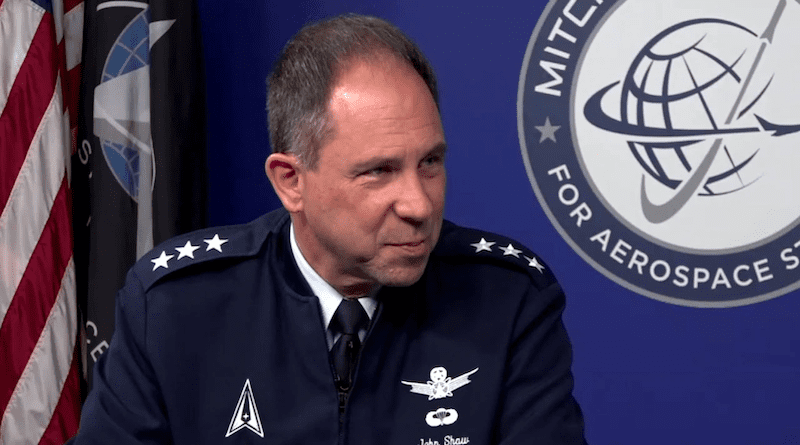US Spacecom General Wants Satellites With Sustained Maneuverability
By DoD News
By David Vergun
In the next four to five years, operations by the Defense Department in the space domain will likely be transformed, said the U.S. Space Command deputy commander.
“Since the dawn of space age, we’re doing it wrong. What we’ve really been doing is what I call positional space operations. We launch a platform into orbit and we tend to leave it right in that orbit. And the only energy state changes from that orbit tend usually to be station-keeping maneuvers, maybe some slight repositioning, depending on what you’re doing,” Space Force Lt. Gen. John E. Shaw said Thursday at the Mitchell Institute for Aerospace Studies. “That’s not going to be sufficient anymore.”
Systems that provide communications and many DOD national security systems are probably going to remain positional, such as those used for missile warnings, he said.
However, there are emerging sets of platforms that have to overcome this positional approach. “They need to probably spend most of their lifetime changing their energy state and maneuvering as opposed to staying in orbit,” he said.
The Geosynchronous Space Situational Awareness Program is one example where maneuverability would be desirable, he said. That program consists of satellites operating in the near-geosynchronous orbit to support Spacecom’s space surveillance operations.
Satellites in a geosynchronous orbit move in an orbit that matches the Earth’s rotation. Satellites in that program look at other platforms to determine if things are working right or if there could be malfunctions, for instance on a solar panel deployment. Those satellites could also be used to determine if an adversary’s satellite is behaving suspiciously with malicious intent, he said.
Operating in a dynamic, more maneuverable manner would allow DOD to achieve surprise and gain the initiative against adversaries in ways not possible today, Shaw said.
The general also said collaboration with allies, partners and other agencies is important. For instance, Spacecom shares sensor data with NASA, which helps the agency with situational awareness for manned space flights.
Spacecom is also working closely with the Department of Commerce to help set up an architecture for space traffic management, as space has become increasingly commercialized, he said.
In addition, the Russia-Ukraine conflict has highlighted the importance of space for surveillance and communications, he said. For instance, Russia has been trying to jam the GPS and navigational satellite systems used by Ukraine, and Ukraine has responded in kind.

